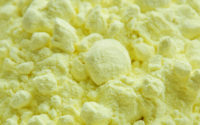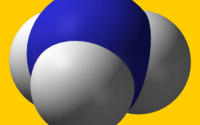Emerging New Technologies in Hydrogen Peroxide
With the continuous rise in population and industrialization, the demand for Hydrogen Peroxide is gradually increasing in various end-user industries including pulp, chemical manufacturing, pharmaceutical, cosmetic, electronic, wastewater treatment and others. Sanitation and healthcare are the most crucial sectors demanding the high production of Hydrogen Peroxide. Being a valuable commodity chemical, a wide range of technologies are being developed or under development to synthesize Hydrogen Peroxide on a large scale. Due to its numerous applications in almost every aspect of human life, the method of the production of Hydrogen Peroxide is very important.
Get more information: https://www.chemanalyst.com/industry-report/hydrogen-peroxide-market-191
Hydrogen Peroxide is a chemical compound which is colorless, odorless, reactive and slightly acidic in nature. It is an atom efficient, non-toxic and eco-friendly oxidant. According to the US Department of Transportation, H2O2 above 8% concentration is classified as ‘oxidizer’. It is a more powerful oxidizer than Chlorine, Chlorine Dioxide and Potassium Permanganate. Hydrogen Peroxide further gives water and oxygen as degradation products depending upon the type of catalyst used in the production. Usually, 3-70% concentration of H2O2 is used in various applications such as 3% concentration is used in households, 6-7% in cosmetics/hair bleaching, around 35% as a food grade used in food packaging, 50% as a mild antiseptic to prevent infections and higher concentration up to 70% is used in the manufacturing of epoxy plasticizers, rubber chemicals, wastewater treatment, anti-corrosion, mining and bleaching applications whereas 90% or above H2O2 concentration is used in industrial applications such as components for rocket fuel, military, aerospace purposes and others. Hydrogen Peroxide can be produced by different means including chemical, enzymatic, electrochemical and photocatalytic.
Track Real Time Prices: https://www.chemanalyst.com/Pricing-data/hydrogen-peroxide-1169
In current times, the industrial production of Hydrogen Peroxide is dominated by the anthraquinone autoxidation process. In this process, Hydrogen and Oxygen react indirectly in the presence of quinones using Palladium as a hydrogenated catalyst to yield Hydrogen Peroxide. New technologies such as microreactor technology and others are emerging to synthesize Hydrogen Peroxide in order to replace the anthraquinone process due to its complexity and multi-step nature. The direct synthesis of Hydrogen Peroxide from its constituent reagents is an effective way to restore the process but factors such as water formation due to thermodynamics and explosion risk can cause hindrance in the production at industrial level. These new emerging technologies possesses a high degree of reliability to directly synthesize Hydrogen Peroxide in a continuous mode.
Current Practice of Hydrogen Peroxide Manufacturing:
Industrial production of Hydrogen Peroxide is done by chemical and electrochemical methods:
Chemical Process–
- Barium Peroxide is reacted with Hydrochloric acid to form Barium Chloride and Hydrogen Peroxide (H2O2).
- The autoxidation of Hydroquinones and Hydrazobenzenes under the alkaline conditions in the presence of molecular oxygen to yield H2O2.
Chemical Autoxidation Process –
- The alternate oxidation and reduction of Hydrazobenzenes to H2O
- Pfleiderer, Baden Aniline and Soda Factory (BASF) performed alkaline autoxidation of hydrazobenzenes in order to form Sodium Peroxide then later hydrolyzed it to form H2O2.
- Oxidation of 2-propanol is done to yield Hydrogen Peroxide through Shell process .
Electrochemical Process –
- Electrolysis of Sulphuric Acid to yield H2O2.
- Ammonium Peroxodisulphate is used to produce H2O2 by electrolysis in Lowenstein-Riedel process.
Drawbacks of Direct Synthesis of Hydrogen Peroxide:
Due to raising concerns regarding environment and conservation of resources, the industrial manufacturing of Hydrogen Peroxide by the Autoxidation (AO) process using hydroquinones had a negative impact on environment leading to massive production of unwanted waste. The industries are about to introduce safe, benign and non-polluting processes to synthesize H2O2 by using the principles of green chemistry. Atom Efficiency (AE) and E-factor are most importantly used terms in accessing the greenness of a process. AE describes the amount of waste generated by a particular process which further determines the E-factor. AO process is highly used in the manufacturing of Hydrogen Peroxide at industrial level as it is economically feasible. But, due to the excessive use of solvents, low efficiency, and limitations on mass transfer of reactants between reactors, new technology is focusing on directly synthesizing Hydrogen Peroxide using chemical catalytic methods.
Synthesis of Hydrogen Peroxide by Chemical Catalysis –
The direct synthesis of Hydrogen Peroxide from H2 & O2 using noble metals such as Palladium (Pd), Platinum (Pt), Nickel (Ni), etc. that are capable of fixing hydrogen as catalyst can be accomplished in a single reactor system. This process is environment friendly as it uses the green solvents like water, ethanol or methanol. Production of Hydrogen Peroxide by chemical catalysis is an economical process due to fewer downstream operations. The process of direct synthesis of Hydrogen Peroxide using chemical catalysts requires certain operating conditions such as:
- Ratio of Hydrogen and Oxygen
Unwanted side reactions occur during the process of direct synthesis that reduces the productivity of Hydrogen Peroxide. First side reaction is the oxidation of H2 to H2O followed by second side reaction i.e., the reduction of H2O2 to H2O. Excess of H2 could favor the reduction of H2O2 whereas stoichiometric amounts would increase the H2O2 concentration during the synthesis. Excess of O2 compared to Hydrogen would increase the selectivity and approach of direct synthesis process. Due to the flammable nature of Hydrogen and Oxygen over a wide range of concentration, it is suitable to perform the reaction at lower rates of H2 and O2 with diluted inert gases such as Helium (He), Nitrogen (N2), Argon (Ar) or Carbon dioxide (Co2). However, Hydrogen Peroxide at any concentration is non-flammable. Many chemists and engineers found out that increase in the solubility of H2 and O2 in the reaction medium will cause better adsorption of gases on the catalytic surface which would further lead to a better yield of Hydrogen Peroxide. During the synthesis, electrochemical sensor system can be used to detect and monitor the Hydrogen Peroxide levels. The sensor is also capable to perform under high analyte concentrations and pressures.
- Medium for the Reaction
The direct synthesis of Hydrogen Peroxide from H2 and O2 without any reaction medium in the gaseous state is considered highly dangerous as they form an explosive mixture when combined over different concentrations. Whereas the reaction to produce Hydrogen Peroxide in appropriate medium and at low temperatures can prevent explosions. Choosing the right reaction medium for the process is an important step. Water is mostly used a reaction solvent along with Ethanol and Methanol as exceptions.
- Promoters
To promote the yielding of Hydrogen Peroxide for direct synthesis, special additives known as ‘promoters’ are often used in order to stabilize the Hydrogen Peroxide production. Acids such as acetic acid, Phosphoric acid, Nitric Acid, etc., and halides such as Hydrochloric Acid, Hydrobromic Acid, Hydroiodic Acid are the most used promoters. Absence of promoters or additives can either lead to more prominent water forming reaction than H2O2 forming one or subsequent reaction further forming H2O.
- Reactor Design
The type of reactor used in the reaction for direct synthesis of Hydrogen Peroxide is extremely important. Few often used reactors include slurry reactors, microreactors, plugged flow reactors and trickle bed reactors. The major requirement while choosing a reactor is that the vessel should withstand the high pressure. Reactor design of a microreactor consists of micro structured features with a sub millimetre dimension, where the reactions are performed in a continuous manner. However, the incorporation of metal catalysts within the capillaries for the synthesis of Hydrogen Peroxide can be a drawback for a microreactor. Trickle bed reactor or a plugged flow reactor can be used to overcome Hydrogen Peroxide decomposition.
Influence of the Catalyst
Promoters such as H2SO4, NaBr, KBr and H3PO4 can influence the direct synthesis of Hydrogen Peroxide by increasing the selectivity of the process. The presence of catalysts especially noble metals can help in hydrogenation and subsequent decomposition of Hydrogen Peroxide to water. Palladium (Pd) catalysts are most exclusively used in the reactions in order to enhance the selectivity and productivity of the process.
Major Players
Some of the major players operating in the global Hydrogen Peroxide market are AkzoNobel N.V., BASF SE, The Dow Chemicals Company, Merck Group, Kemira Oyj, Evonik Industries, OCL Company Ltd., National Peroxide Ltd., Nouryon, Mitsubishi Gas Chemical Company Inc., Aditya Birla chemicals Ltd and others.
FAQs :
- What is causing a major drive in the global Hydrogen Peroxide market?
Growing demand for benign and environment friendly Hydrogen Peroxide in major end-user industries mainly in Polyurethane industries is causing a major drive in the global Hydrogen Peroxide market. Huge demand for Hydrogen Peroxide in healthcare and cosmetics sector is also likely to boost the global Hydrogen Peroxide market.
- What are the challenges faced by the global Hydrogen Peroxide market?
Due to the onset of COVID-19, many manufacturing industries were impacted during the first half of 2020. Industries lacked key feedstock chemicals due to disruptions in global supply chain and plant outages initially in 2020. Due to government restrictions and lockdowns, sales and trade caused sudden decline in the manufacturing, which affected the Hydrogen Peroxide market worldwide. Limited supply of Hydrogen Peroxide to healthcare and Polyurethane industries during the crises hindered the production of Hydrogen Peroxide.
- What are the drawbacks of direct synthesis of Hydrogen Peroxide using chemical catalysis?
During the process, unselective reactions can lead to the production of simultaneous side products other than Hydrogen Peroxide, mainly water. The explosive nature of Hydrogen and Oxygen over a wide range of concentrations is an important parameter to keep in mind. However, it can be prevented by choosing the right reaction medium.
- Which Region holds the highest share of global Hydrogen Peroxide market?
Asia Pacific region occupies the largest share in the Hydrogen Peroxide market globally followed by North America and Europe. Increasing demand for Hydrogen Peroxide in the chemical industry in China is likely to drive the global Hydrogen Peroxide market.
Conclusion:
Global Hydrogen Peroxide market has shown considerable growth in the historic period and is anticipated to grow during the forecast period. The high demand for Hydrogen Peroxide in various industries including chemical and mechanical pulp industries, chemical manufacturing, textile industries, healthcare, water and wastewater treatment, electronics, cosmetics and pharmaceutical for numerous applications will bolster the production of Hydrogen Peroxide on a large scale. The rising demand to produce Hydrogen Peroxide by using emerging technologies due to environmental concerns and other factors such as direct synthesis of H2O2 using Palladium as a chemical catalyst to enhance selectivity and productivity is all set to grab the Hydrogen Peroxide market. The major companies in the global Hydrogen Peroxide market are focusing on product innovation and research to gain a competitive edge over other key players.



